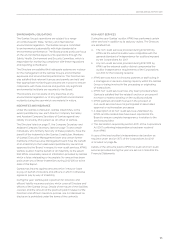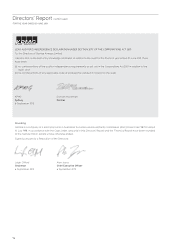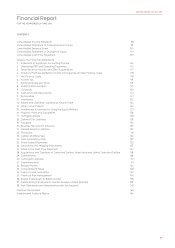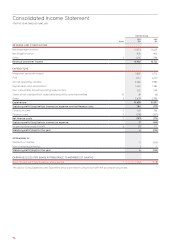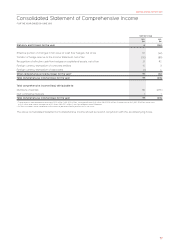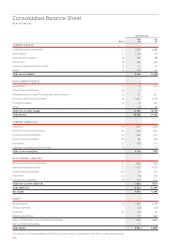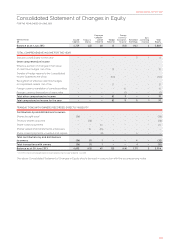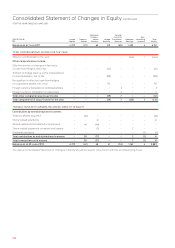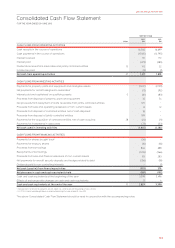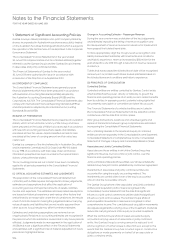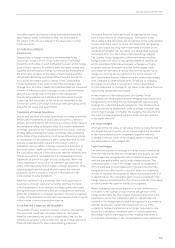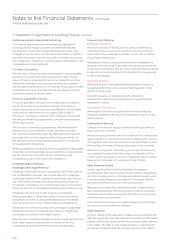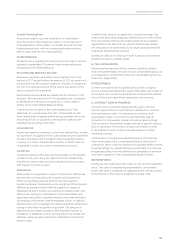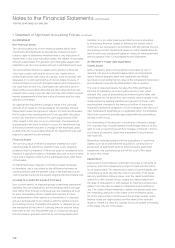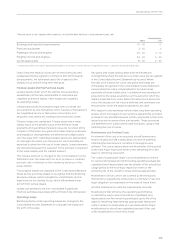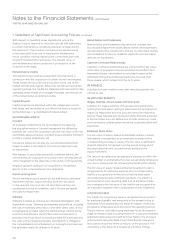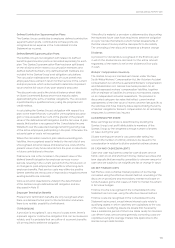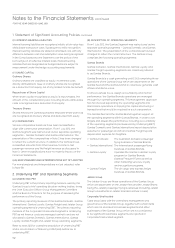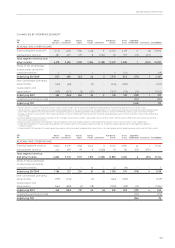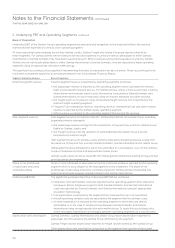Qantas 2013 Annual Report Download - page 107
Download and view the complete annual report
Please find page 107 of the 2013 Qantas annual report below. You can navigate through the pages in the report by either clicking on the pages listed below, or by using the keyword search tool below to find specific information within the annual report.
105
QANTAS ANNUAL REPORT 2013
Unrealised gains and losses arising from transactions with
associates or jointly controlled entities are eliminated to
the extent of the Group’s interest in the associate or jointly
controlled entity.
E FOREIGN CURRENCY
Transactions
Transactions in foreign currencies are translated to the
functional currency of the Group at the rates of exchange
prevailing at the date of each transaction except where hedge
accounting is applied. At balance date, monetary assets and
liabilities denominated in foreign currencies are translated to
the functional currency at the rates of exchange prevailing
at that date. Resulting exchange differences are brought to
account as exchange gains or losses in the Consolidated
Income Statement in the year in which the exchange rates
change. Non-monetary assets and liabilities that are measured
in terms of historical cost in a foreign currency are translated
using the exchange rate at the date of the transaction.
Non-monetary assets and liabilities denominated in foreign
currencies that are stated at fair value are translated to the
functional currency at foreign exchange rates prevailing at the
dates the fair value was determined.
Translation of Foreign Operations
Assets and liabilities of foreign operations, including controlled
entities and investments in associates and jointly controlled
entities, are translated to the functional currency at the rates of
exchange prevailing at balance date. The income statements
of foreign operations are translated to the functional currency
at rates approximating the foreign exchange rates prevailing
at the dates of the transactions. Exchange differences arising
on translation are recognised in other comprehensive income
and are presented within equity in the foreign currency
translation reserve. When a foreign operation is disposed of
such that control, signicant inuence or joint control is lost,
the cumulative amount in the translation reserve related to that
foreign operation is reclassied to the Consolidated Income
Statement as part of the gain or loss on disposal. When the
Group disposes of only part of its interest in an associate or
jointly controlled entity that includes a foreign operation, while
retaining signicant inuence or joint control, the relevant
proportion of the cumulative amount is reclassied to the
Consolidated Income Statement.
When the settlement of a monetary item receivable from or
payable to a foreign operation is neither planned nor likely
in the foreseeable future, foreign exchange gains and losses
arising from such a monetary item are considered to form part
of the net investment in a foreign operation and are recognised
in other comprehensive income and are presented within equity
in the foreign currency translation reserve.
F DERIVATIVE FINANCIAL INSTRUMENTS
The Qantas Group is subject to foreign currency, interest rate,
fuel price and credit risks. Derivative and non-derivative
nancial instruments are used to hedge these risks. It is the
Qantas Group’s policy not to enter into, issue or hold derivative
nancial instruments for speculative trading purposes.
Derivative nancial instruments are recognised at fair value
both initially and on an ongoing basis. Transaction costs
attributable to the derivative are recognised in the Consolidated
Income Statement when incurred. The method of recognising
gains and losses resulting from movements in market prices
depends on whether the derivative is a designated hedging
instrument and, if so, the nature of the risk being hedged.
The Qantas Group designates certain derivatives as either
hedges of the fair value of recognised assets or liabilities or
a rm commitment (fair value hedges), or hedges of highly
probable forecast transactions (cash ow hedges). Gains
and losses on derivative nancial instruments qualifying for
hedge accounting are recognised in the same category in
the Consolidated Income Statement as the underlying hedged
item. Changes in
underlying market conditions or hedging
strategies could result
in recognition in the Consolidated
Income Statement of changes in fair value of derivative nancial
instruments designated as hedges.
At the inception of the transactions, the Qantas Group
documents the relationship between hedging instruments and
hedged items, including the risk management objective and
strategy for undertaking each transaction. The Qantas Group
also documents its assessment, both at hedge inception and
on an ongoing basis, of whether the hedging instruments that
are used in hedge transactions have been and will continue
to be highly effective.
Fair Value Hedges
Changes in the fair value of derivative nancial instruments that
are designated and qualify as fair value hedges are recorded
in the Consolidated Income Statement, together with any
changes in the fair value of the hedged asset or liability that
are attributable to the hedged risk.
Cash Flow Hedges
The effective portion of changes in the fair value of derivative
nancial instruments that are designated and qualify as cash
ow hedges are recognised in other comprehensive income
and are presented within equity in the hedge reserve. The
cumulative gain or loss in the hedge reserve is recognised in
the Consolidated Income Statement in the periods when the
hedged item will affect prot or loss (i.e. when the underlying
income or expense is recognised). Where the hedged item is of
a capital nature, the cumulative gain or loss recognised in the
hedge reserve is transferred to the carrying amount of the asset
or liability when the asset or liability is recognised.
When a hedging instrument expires or is sold, terminated or
exercised, or the Qantas Group revokes designation of the
hedge relationship but the hedged forecast transaction is still
expected to occur, the cumulative gain or loss at that point
remains in the hedge reserve and is recognised in accordance
with the above policy when the transaction occurs. If the
underlying hedged transaction is no longer expected to take
place, the cumulative unrealised gain or loss recognised in
the hedge reserve with respect to the hedging instrument is
recognised immediately in the Consolidated Income Statement.


